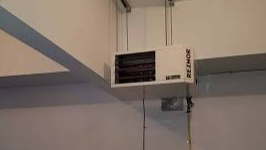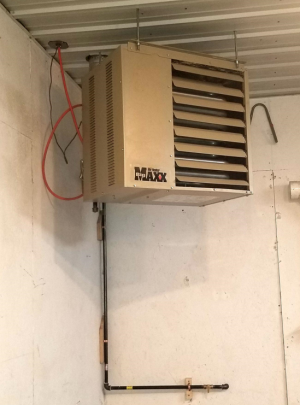My shop is pretty small. 12 x 20. It is very well insulated. It has stayed right at 70⁰ all summer with me only running the AC while I'm in their for about $0.07 an hour. I'm rarely in there all day so cooling has been crazy cheap this year.
In the Ohio winter I've been keeping it around 40⁰ with an oil filled radiator heater. Then I heat it up when I go in there. That was partly a portable buddy propane heater and another electric heater like the radiant heater I mounted at the end of the shop.
I've decided to eliminate combustion in the shop to avoid the moisture that comes with it.
If I run my oil radiant heater at 600 watts non stop for 30 days it will cost me $59. That would put me at 50's to 60's depending on the outside temperature. It cost me around $0.20 to run a second electric heater at 1500 watts for an hour to kick the temperature up to around 60⁰ where I like to work. The secondary heater would probably only add a dollar or two a month because of the short duration of use.
What I don't know is how much efficiency is gained by maintaining the warmth in the walls, floor, and machines. If I maintain 50⁰ I wonder if my oil heater will run non stop or catch up and shut off occasionally.
No....I'm not installing a mini split in my tiny shop. My window unit is costing my less than $10 a month.
I'm more interested in how things will go by keeping it warmer all the time. Less temperature swings would be nice. I live in the frozen tundra.
In the Ohio winter I've been keeping it around 40⁰ with an oil filled radiator heater. Then I heat it up when I go in there. That was partly a portable buddy propane heater and another electric heater like the radiant heater I mounted at the end of the shop.
I've decided to eliminate combustion in the shop to avoid the moisture that comes with it.
If I run my oil radiant heater at 600 watts non stop for 30 days it will cost me $59. That would put me at 50's to 60's depending on the outside temperature. It cost me around $0.20 to run a second electric heater at 1500 watts for an hour to kick the temperature up to around 60⁰ where I like to work. The secondary heater would probably only add a dollar or two a month because of the short duration of use.
What I don't know is how much efficiency is gained by maintaining the warmth in the walls, floor, and machines. If I maintain 50⁰ I wonder if my oil heater will run non stop or catch up and shut off occasionally.
No....I'm not installing a mini split in my tiny shop. My window unit is costing my less than $10 a month.
I'm more interested in how things will go by keeping it warmer all the time. Less temperature swings would be nice. I live in the frozen tundra.



